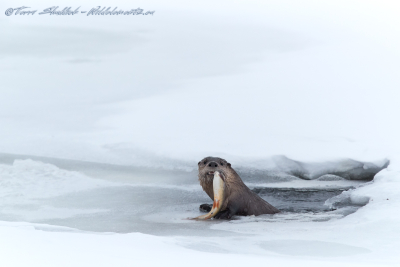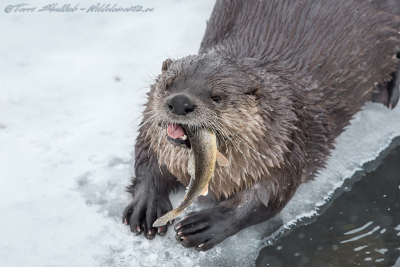09 Jan Top 10 of 2016: #4 – River Otters Fishing
Notice: Trying to access array offset on value of type bool in /var/www/wp-content/plugins/bridge-core/modules/shortcodes/shortcode-elements/_social-share/templates/social-share.php on line 124
Continuing with my Top 10 of 2016 number 4 are a series of images of River Otters in Yellowstone National Park, with both enjoying “Fish for Lunch”.
As I mentioned in my post on the Northern Pygmy Owl, Yellowstone provided me a couple “firsts” in 2016, with one being the Northern Pygmy Owl, and the other being River Otters. We had the opportunity to spend pretty much an entire day at the side of the river photographing up to 5 different River Otters. Not only was I lucky enough to get photos of River Otters, I was even more lucky to get several images of them bringing fish out of the water to feast on.
River Otters are opportunistic feeders, and their diets vary quite a bit. While River Otters primarily eat fish, they will really just eat whatever they can get, and have been known to eat amphibians, crustaceans, rodents, and even birds. In these images, the River Otter is enjoying an afternoon lunch of a Cutthroat Trout.
Unlike Sea Otters (like the one in Loving Life), River Otters are just as comfortable on land as they are in the water, and can live in rivers, lakes, or swamps. While photographing them swimming in the water can be fun, the real fun came in watching them play and even “dance” on the land.
What makes River Otters one of the most fun animals to photograph is that the family group is very playful, rolling around on the snow with one another, and also chasing each other on land. Rolling around on the ground allows their dense fur keep its insulating properties (however to us humans, we take it as them performing for us).
River Otters can hold their breath for up to 8 minutes, which made photographing them quite tricky, because they would go under the ice, and disappear for a short while, and could pop up quite a distance away. They often use ice holes to come up for a quick breath before going back under water again, which can make tracking them even more difficult.
Stay tuned to my Recent Photos for more images of the River Otters, and stay tuned to my blog for a recap on my trip to Yellowstone National Park.






